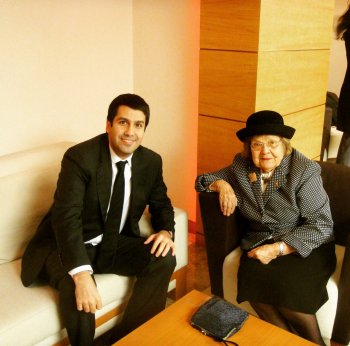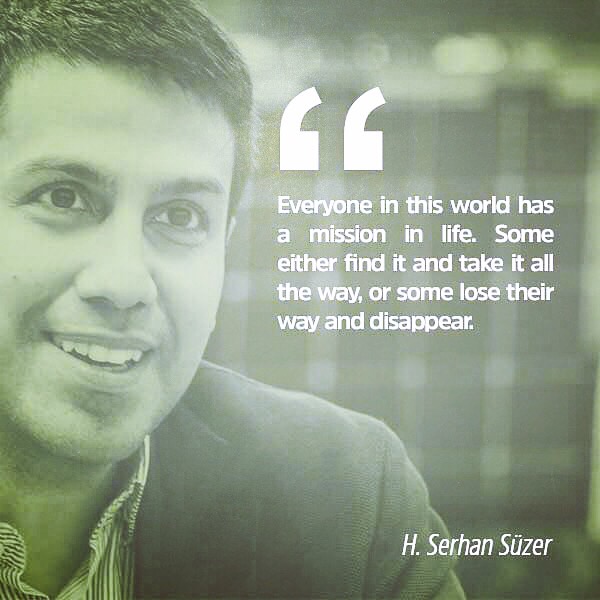Witnessing History at the UN (4)
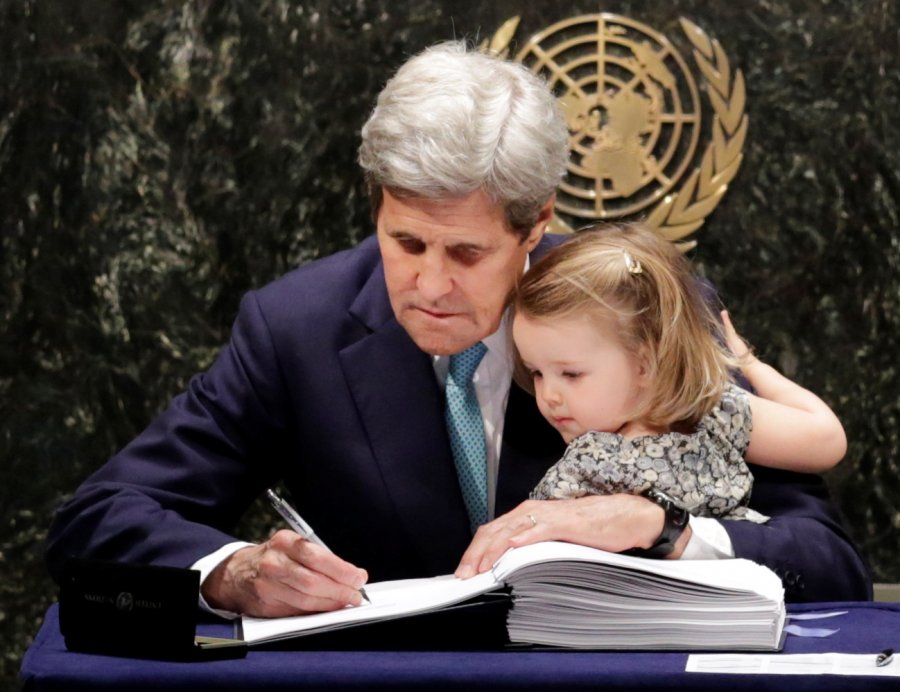
This week I’m finally able to share some important information as well as my impressions of the historical ceremony held at the New York headquarters of the United Nations on April 22. The past weeks and months have been so eventful that this final instalment in the series was postponed. I’ll begin by sharing links to the other articles in the series.
- The story of how I was invited to the historical ceremony and what I experienced during the lead-up to it: http://serhansuzer.com/en/witnessing-history-at-the-united-nations-1
- An account of the thoughts going through my head just before the signing ceremony for the Paris Agreement, as well as some important information on sustainability: http://serhansuzer.com/en/witnessing-history-at-the-un-2
- After my first visit to the United Nations for the ceremony on April 22nd, I was invited there again in June to deliver a speech for the first ever “Agora” event on “Converting to Sustainable Energy without leaving anyone in the World behind.” In this article I share my experiences before the event, explore various aspects of sustainability and include some of impressions afterwards: http://serhansuzer.com/en/witnessing-history-at-the-un-3
In the first article, I tell of how I took my place in the balcony of the United Nations building early in the morning. I was surrounded by the representatives of major organizations that have proven themselves on the subject of sustainability. The security measures were extreme; I thought the Americans had overdone it, as usual. Everyone was being screened and a Latino friend right next to me who was representing the Global Catholic Climate Movement was sent from the very front to the very back because of having taken a photo of his own organization’s sign. I understand that the presence of statesmen, leaders and bureaucrats from hundreds of countries necessitates thorough security measures, but I have to say I thought security was wrong to treat us this way considering that those in attendance had already been screened and were all prominent figures and professionals.
The future is now!
Keynote speaker UN Secretary-General Ban Ki-Moon was followed by a 13-year Tanzanian girl named Gertrude Clement, who ended her talk with the words: “The future is now.” Ki-Moon reappeared at the lectern and spoke first in French, and then in English. To sum up his words, he said the day was historical, that all countries must take action for our future, that the agreement was more than a pledge and that it was time all states and governments too action. He then thanked all the countries for leading the way on this subject.
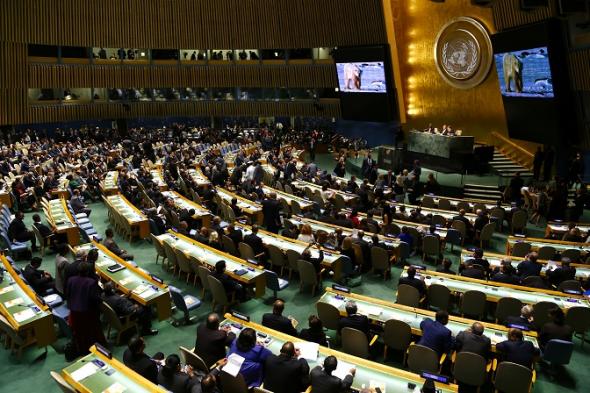
French President Hollande was invited to the lectern next. Hollande paid tribute to the representatives of every country, the COP President, Ségolène Royal, and also the representative of Morocco, King Mohammed VI, because the conference’s next meeting will be held in Marrakesh. The French President went on to say:
“The fact that so many of us are here in New York today, with such determination, is because there was an agreement in Paris. 12 December 2015 was an historic day for the international community, which we can be proud of…
We must go further, beyond the promises made, the commitments made, and ensure our words become deeds…
There have been disasters again in Fiji, with a devastating cyclone; there’s been the famine that has spread in Africa; Lake Chad in Africa is still constantly shrinking and at risk of disappearing; there are islands that have been submerged. I’m also sounding the alarm about the destruction of ecosystems. Every year, 20 million hectares of forest in South-East Asia, Latin America and Africa go up in smoke. So that’s why we’re gathered today. Do I have to go on, in order to justify what we did in Paris, which obliges us to go even further?...
We’re gathered in numbers which are themselves exceptional - historic, as the United Nations Secretary-General said; never in the United Nations’ history has it been possible to bring together 170 countries to sign an agreement in one day…
What’s the next stage, after what we’re going to do today? It’s the ratification, with the goal of getting 55 states, accounting for 55% of emissions. Fifty-five states: they’re here; 55% of emissions: it must be possible to achieve them…
We must move more quickly, even more quickly because time is running out; we must be able to adopt low-carbon strategies; we must be able to raise the financing which was key to the Paris Agreement - $100 billion by 2020, and more if we can…
Mankind can always produce what is best, even though it’s capable of what is worst, so today we’ve made sure that the best is possible; let’s continue to reject everything which the worst is capable of destroying - i.e. the most valuable asset, the one we’ve inherited, must cherish and must uphold beyond our own lives: mankind.”
The beginning, not the end
President of the General Assembly Mogens Lykketoft spoke next, thanking all the states and individuals who helped make the Paris Agreement a reality and expressing his hope that everyone would honor their commitments.
Peruvian President Ollanta Humala Tasso was then invited to speak. He said he was pleased to play a major role in the signing of the Paris Agreement by being one of the architects of the COP 20 held in his country. Calling the Paris Agreement the most important deal ever made for our planet, a spearhead for combating climate change, Tasso added that Lima was prepared to implement the Action Agenda aiming to make Peru a “Climate Responsible Country” with carbon emissions reduced to zero in 2021. He celebrated the agreement as a victory he called “a beginning, not an end.” “Today, we can ratify the greatest partnership against the enemy — climate change,” he declared.
Democratic Republic of the Congo President Joseph Kabila spoke next, saying the most significant steps in fighting climate change had been taken by the least developed countries, 47 of which had signed the agreement. Kabila said his country was “fully aware of the need for a global effort to tackle global warming and had committed to reducing greenhouse gas emissions by 17 per cent between 2020 and 2030.” The transfer of technology, building capacity, securing financing, ensuring resilience in the face of climate change, and developing renewable energy were the main priorities of the Democratic Republic of the Congo, he said, noting that it had a significant and diverse range of natural resources that made it an important partner in the fight against climate change.
When Kabila finished his lengthy comments, Ki-Moon jokingly noted that Lykketoft had thus far been the only person to stay within the agreed timeframe for speeches, and politely but firmly called on subsequent speakers to do so.
Mother Earth or Death!
Noting that it was Earth Day, Bolivian President Evo Morales said his ancestors had taught him that the land is “our mother, our home that should be protected”. Pointing out that we have seen that an increase of just one degree can cause drought and disaster, Morales said that the rights of Mother Earth are more important than individual rights, for which reason we must adopt universal rules and sanctions. He ended with the slogan: “¡Pachamama o muerte! ¡Venceremos! / Mother Earth or death! We shall overcome!” (Pachamama is the indigenous Inca name for “Mother Earth” in what is today Bolivia, Ecuador, Chile and Peru.)
The next speaker was President of Brazil Dilma Roussef. Speaking in Portuguese, Roussef called the agreement a success and thanked Ban Ki-moon and François Hollande for their efforts, adding that she was proud of her country’s contribution. Developing countries like Brazil had achieved significant emission reductions and taken on even more ambitious targets, she said. She went on to emphasize that it was necessary to increase climate financing beyond the annual $100 billion commitment. International financial flows must be permanently reoriented to support measures that would translate into solutions. Brazil was determined to intensify mitigation and adaptation actions, and in that regard, would work for a 37 per cent reduction in greenhouse-gas emissions by 2025, and 43 per cent by 2030, compared to 2005 levels, she said. The country would also achieve zero deforestation in the Amazon and neutralize emissions from the legal suppression of vegetation. Another challenge would be the restoration and reforestation of 12 million hectares of forest and another 15 million hectares of degraded pasture.
Record applause for Justin Trudeau
Next, Zhang Gaoli, the vice-premier of China, the country responsible for the most annual carbon emissions, described the Paris Agreement as a milestone in the global response to climate change and said his country was on board for new measures. “We will work hard to earnestly implement the Paris Agreement,” he said. Under the national five-year plan, efforts would be made to cut carbon emissions by 18 per cent, control carbon intensity and launch near-zero carbon emission projects. It would also put in place a strict accountability system for environmental protection and ensure implementation of all targets. More broadly, China would enhance international cooperation against climate change by taking part in follow-up negotiations on the Paris Agreement, while deepening South-South cooperation on climate change.
A round of applause welcomes the next leader, Canadian Prime Minister Justin Trudeau. Speaking in French and English, Trudeau proved his popularity by receiving the most applause for what seemed to me to be a standard speech. Canada had encouraged actions to reduce greenhouse-gas emissions and invested billions in a green energy fund. It had also signed on to “Mission Innovation”, a global partnership that aimed to double Government investment in climate-change initiatives over five years, while encouraging a more prominent role for the private sector. “These actions are just the beginning,” he said, emphasizing that the country was not making such investments to be “nice”. The country would also play a prominent role in supporting developing countries, which should neither be punished for a problem they had not created, nor deprived of the opportunities for clean growth that developed countries were pursuing. That was why Canada would investment $2.5 billion over the next five years to help developing countries move towards sustainable development, he said. Trudeau ended by agreeing with Ki-Moon that the unthinkable had now become unstoppable, requiring everyone to play their part and succeed together.
Next up was Italian Prime Minister Matteo Renzi, who asked delegates to close their eyes and imagine their sons and grandsons in the General Assembly chamber for the first time. “Today, finally, we give a message of hope,” he said. The Paris Agreement was important, but not only for a single issue. We give the message that politics is able to give hope for the next generations,” he said, emphasizing that Italy would work for implementation of the Paris Agreement in the coming months.
Next up was Enele Sosene, the prime minister of the tiny Pacific island of Tuvalu. He welcomed the decision by the Intergovernmental Panel on Climate Change to develop a special report on the impacts of a 1.5 °C global temperature rise, saying he suspected that would have serious implications for small-island countries, such as his own. More broadly, he said an average 62,000 people were displaced each day due to climate change, a staggering figure that should ring alarm bells. Calling for an Assembly resolution to establish a legal protection system for people displaced by the impacts of climate change, he said that, since small island developing States required better access to climate financing, disbursement of the Green Climate Facility must be based on accessibility and level of vulnerability, rather than how well a State party could write its adaptation or mitigation proposals.
The views of Russia and the US
Next, Deputy Prime Minister of Russia Alexander Khloponin said his country intended to limit greenhouse gas emissions to 70 per cent of 1990s levels by 2030. The preservation of forests was of major concern for the Russian Federation. The potential of forests must be maximized, without artificial restrictions. The Russian plan to implement the Agreement, included a long-term strategy of low-carbon development through 2050, and systemic efforts for the sustainable management of forests. There needed to be innovative approaches based on technologies, with a particular focus placed on technical cooperation to address climate problems, he said.
US Secretary of State John Kerry was next. The American representative who signed the Kyoto Protocol, Kerry said that he had witnessed numerous historical moments in his 46-year career, but that the Paris Agreement was a special moment showing cooperation and resolve among nations, a turning point in the fight against climate change, when the world had decided to heed the mountain of evidence, put to rest the debate of whether climate change was real, and instead, began to galvanize the focus on how to address the irrefutable reality that nature was changing rapidly due to our own choices. Its power lay in what it would do to unleash the private sector. In 2015, renewable energy investment reached an-all time high of nearly $330 billion. It was predicted that States would invest tens of trillions of dollars by the end of the century. More of the world’s money was now being spent on fostering renewable technologies than on fossil fuel plants. Quoting former South African President Nelson Mandela, he said, “It always seems impossible until it is done.”
Lalla Hasna, Princess of Morocco, whose country would host the twenty-second Conference of the Parties in Marrakech, said collective efforts should focus on the Agreement’s effective implementation. To honor its commitments, she said that Morocco would, by 2030, cut its greenhouse gas emissions by 32 per cent while meeting 52 per cent of its energy needs through renewable sources such as solar and wind farms. It stood ready to share its know-how with others, particularly countries in Africa and the Middle East. Noting how the next Conference would see the adoption of procedures and mechanisms for implementing the Paris Agreement, she emphasized the importance of a clear and predictable road map to raise funds for projects, thus fostering change in private investment patterns.
“One day, there will be nobody left to implement this”
NGO and private sector representatives from India and Chad were next to speak. During one of the most moving and emotional speeches of the day, Hindou Oumarou Ibrahim, civil society representative from Chad, said her people were nomadic pastoralists, where more than 10 million depended on a fragile ecosystem. Thirty years ago, her mother used to walk 10 kilometers a day to collect water and food. Today, young mothers were climate refugees. They could not walk to Lake Chad because it was vanishing. “Climate change is adding poverty to poverty every day,” she said, forcing people to leave their homes in search of a better future. She warned that one day there will be nobody left to implement this treaty and described migration as a tragic fight for survival for those who had been left behind — women and children who must stay and fight the consequences of climate change on their own. Actor and UN Goodwill Ambassador Leonardo Di Caprio made the next to last talk of the day, pointing out that only an end to the use of fossil fuels would truly save the world.
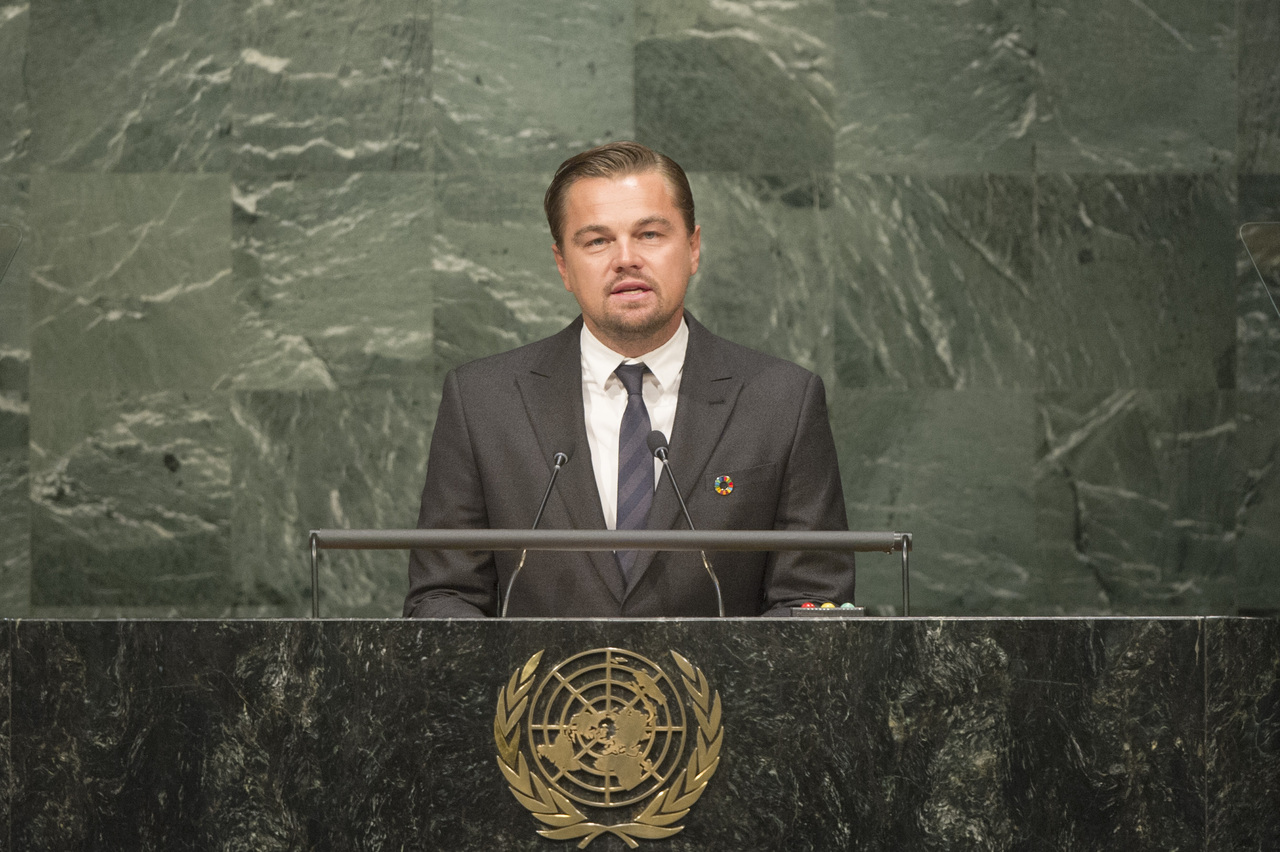
The speeches were followed by the signatory ceremony, during which the names of representatives from 175 countries were each read out as they signed the agreement. Kerry, whose country emits more carbon dioxide than any country but China, signed with his granddaughter on his lap. And so it was that the agreement reached in Paris in December of 2015 was signed by 175 countries on the 46th anniversary of Earth Day at the United Nations headquarters in New York.
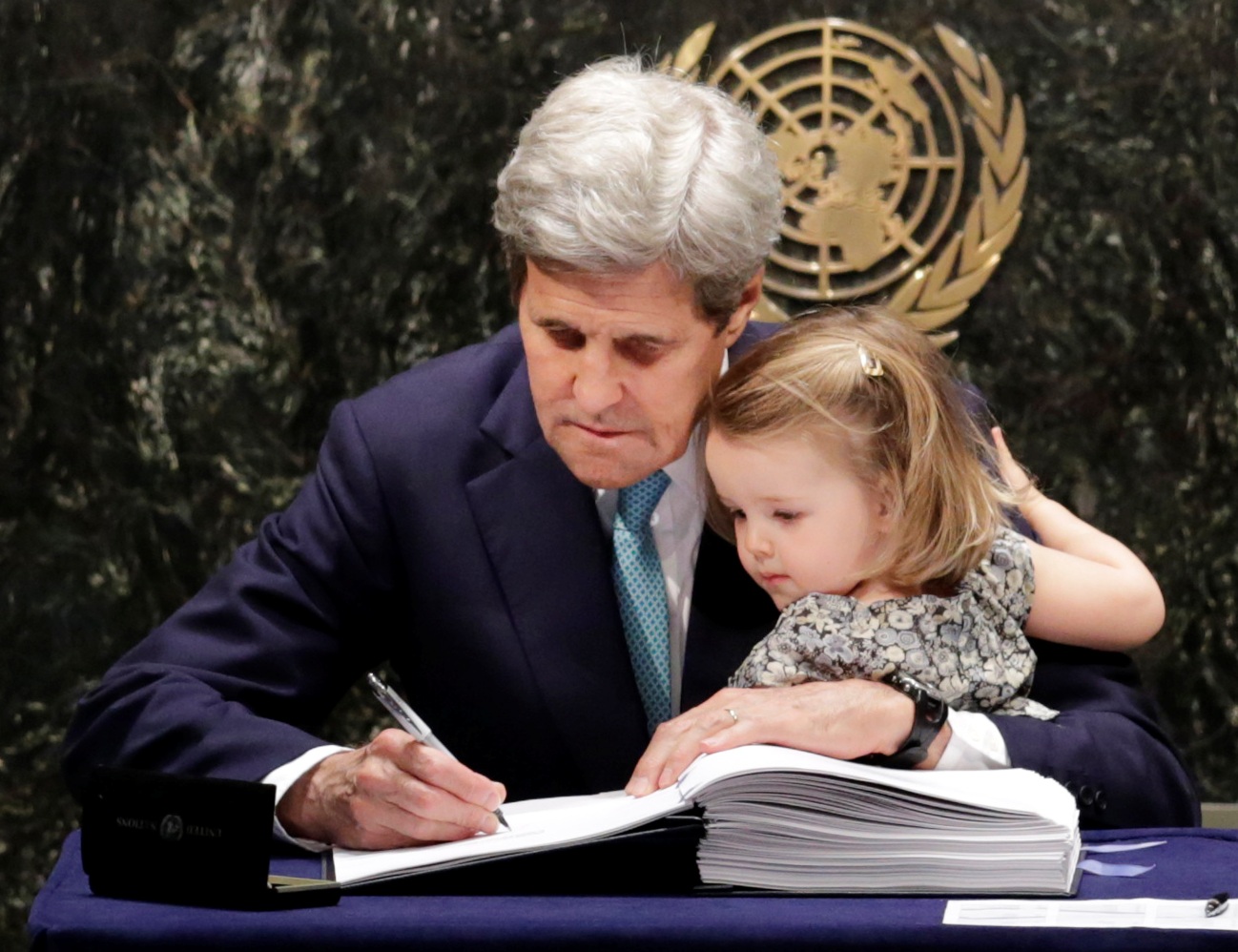
Activities and conferences continues that afternoon. I tried to attend as many speeches and discussions as possible, making for a full day. The Paris Agreement is not only the most comprehensive climate deal ever, it also set a record for most signatories in a single day. The agreement aims to hold the increase in the global average temperature to well below 2 °C above pre-industrial levels and pursues efforts to limit the temperature increase to 1.5 °C above pre-industrial levels. It must now be approved by individual parliaments and legislative bodies. The roughly 15 island nations threatened by rising sea levels approved the agreement, putting it into force.
Turkey: Commitments vs what is really needed
Although the Paris Agreement does not set radical targets for carbon emissions it is considered a diplomatic triumph because it is a deal that more countries than ever before have embraced.
Returning to my own country, we see that Turkey supported this agreement by signing it at the ceremony on April 22. Our parliament, too must now approve and implement the agreement.
Turkey has stated that its emissions will increase by not more than 21% by the year 2030. Energy analyst and journalist Özgür Gürbüz emphasizes that the targets Turkey has signed on to are relatively easy achieve and the real challenge would be in failing to meet its commitments.
Through its current energy policies, Turkey can achieve its commitment of a 21% reduction in carbon dioxide emissions, from 1.175 million tons to 929 million tons.
It is my belief that we should put our official commitment to one side and approach this issue with a greater, more realistic sense of responsibility. We should go beyond our commitments as outlined in the Paris Agreement.
100% Renewable Energy Target
By “beyond,” I mean, as I wrote in Turkish Policy Quarterly in an article entitled “Why Turkey should aim for 100% renewable energy,” (http://turkishpolicy.com/article/632/why-turkey-should-aim-for-100-renewable-energy-summer-2013) that we should minimize emissions through our renewable energy and major energy productivity reforms in heavily polluting sectors such as transportation, tourism and real estate.
Additionally, we should be more sensitive in how we educate the people who will realize all of these applications in the private sector and support R&D that will further technological development.
Let me add I myself, through my company, EkoRE, have assumed my share of the responsibility. In future I will share some specifics of my views concerning the Solar Energy sector and R&D in Turkey.
For future generations: Here’s to a healthy Mother Earth!
Tag: ekoloji






